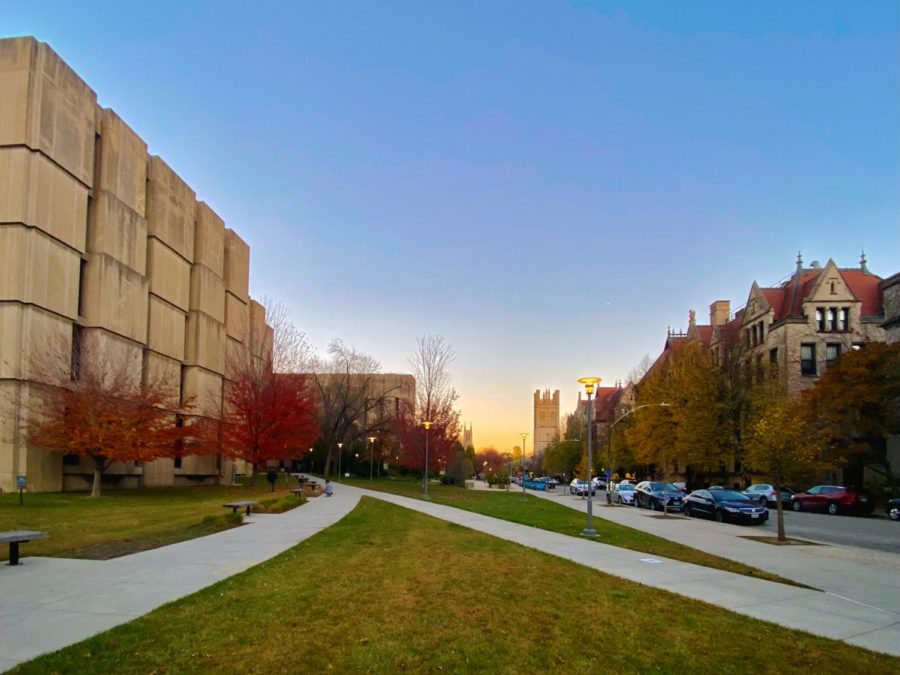On Monday, February 17, New York Times reporters Julie Hirschfeld Davis and Michael D. Shear spoke with University of Chicago Law School Professor Adam Chilton at the Institute of Politics about their new book Border Wars: Inside Trump’s Assault on Immigration, published in October 2019.
Border Wars is an in-depth and behind the scenes look at the evolution of the Trump Administration’s immigration policies.
The story, as told by Davis and Shear, begins after the 2012 presidential election with a group of three Republican politicians: Stephen Miller, Jeff Sessions, and Steve Bannon. Davis explained that, according to these politicians, “the reason Mitt Romney lost was because a very important strain of voters—white working-class voters—had rejected him as a globalist, as an elitist, as somebody who didn’t have their interests at heart.”
Davis and Shear explained that Sessions, Bannon, and Miller worked to connect with this group of voters by creating a message that rejected globalism and advocated for strict immigration laws. “[It] was about talking about ways in which immigrants could be a threat, security-wise and economically, to native-born Americans,” Davis said.
“[Miller, Sessions, and Bannon] had this idea to take back the party—take over the party if [they had] the right person,” Shear said.
Davis explained that this effort to rekindle support for hardline immigration policies in Republican politics coincided with Trump’s early efforts to involve himself in politics. “Trump was sort of flirting with the idea of getting involved in politics and this [kind of message] was very much an ingredient in public rallying cries that he would take around the country.”
The convergence of Trump’s entry into politics and Sessions, Bannon, and Miller’s effort to redefine Republican politics was what Shear and Davis refer to in their book as an “accidental marriage” that ultimately propelled Trump to the American presidency.
Davis and Shear spoke extensively about the role of Trump’s immigration policy proposals in differentiating him from a crowded field in the Republican primaries. “One thing Trump had going for him, as a candidate, was a real sense of what entertains, what appeals, what gets a rise out of people,” Davis said.
“What was pivotal in the primaries for Trump was not so much the substance of his policy proposals on immigration,” Davis said. She added that “the essential thing to understand about Trump is that he understood that [these messages were] effective for him politically.”
Shear and Davis said that despite the fact that Trump’s immigration policy proposals were compelling to his audience, they lacked important procedural considerations that later made their implementation difficult.
“[Trump’s team was] particularly effective at crafting an immigration message that had power in that moment, not so much for crafting an immigration plan,” Shear said.
“They made a lot of promises it wasn’t clear how they could deliver on,” Davis said.
Davis and Shear referenced the chaotic implementation of Executive Order 13769 (the travel ban) as an example of the administration’s struggle to reconcile campaign promises with important logistical considerations related to policy implementation.
However, Davis and Shear also asserted that there was a certain intentionality to the resulting chaos, especially as related to the travel ban, which was signed only one week into Trump’s first term. “The idea was to push through all these really extreme, drastic measures on immigration as a way of shocking the system, both externally—the political system and the public—but also to shock the bureaucracy,” Shear said.
Davis and Shear also discussed the implementation of the family separation policy as an example of the way that Trump’s hardline immigration policies illustrated his administration’s functioning.
“Some of these decisions that people made in the name of the Trump administration were not necessarily things that they agreed with, but they were things ultimately that they were willing to do. And that is the name of the game when you work for an administration like this,” Davis said.
Shear and Davis cited Kirstjen Nielsen, the former Secretary of Homeland Security, as an example of someone who privately pushed back on extreme or unrealistic facets of Trump’s policy but was “ultimately willing” to sign on to the family separation policy.
“[Nielsen] decides she is going to be the face of it, but only because she’s worried that if she doesn’t do that, Jeff Sessions was going to get all the credit.” Davis explained. “She wanted the bump—the reputational benefit—which means a lot with this president.”
Shear noted that Nielsen’s reservations about other areas of Trump’s immigration policy was detrimental to her position in the administration. “Her repeated attempts to stand up to him is ultimately what gets her fired,” Shear said.








